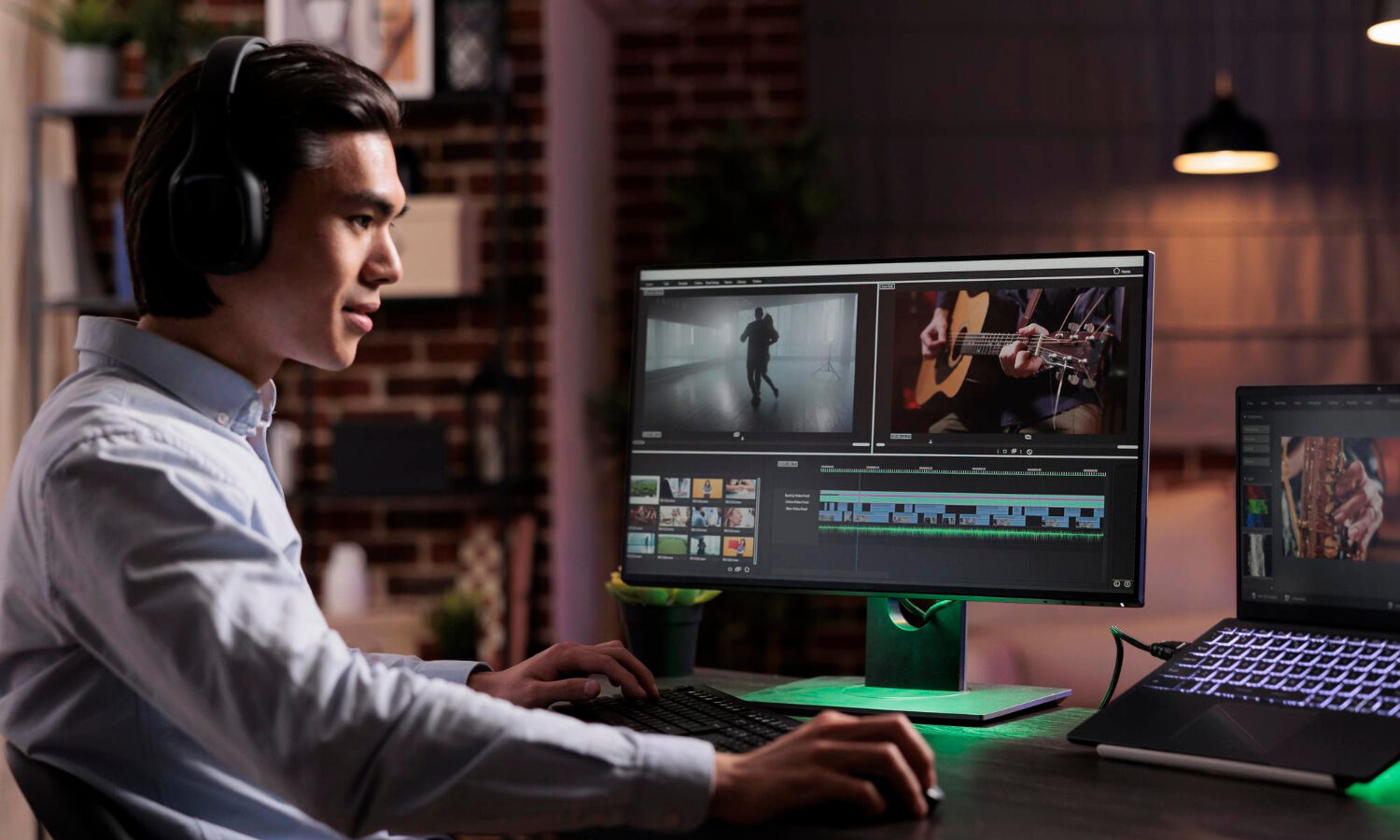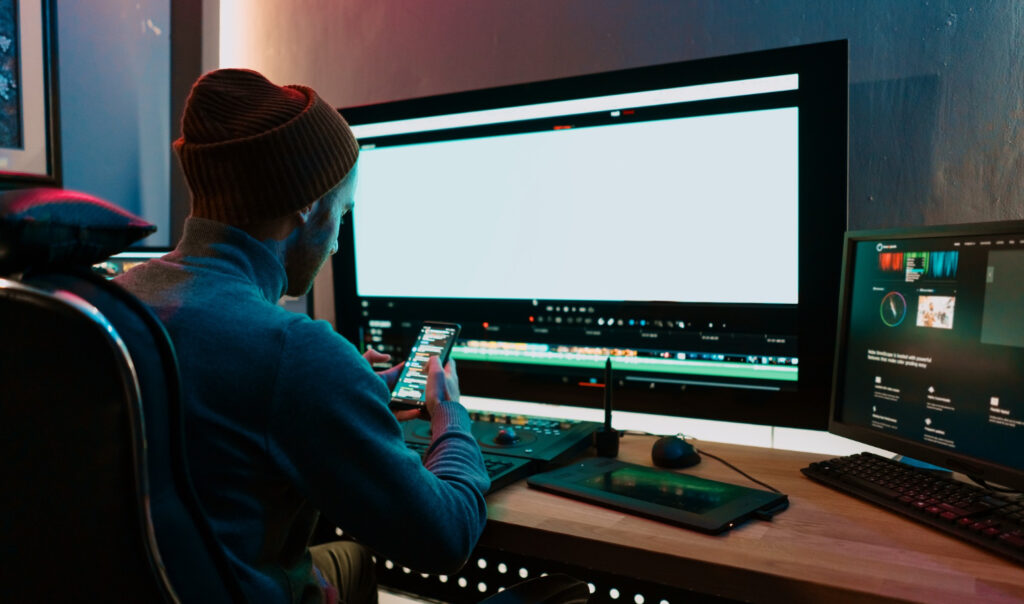M+E Daily

HITS 2023: Pioneers Tackle the Reality of Virtual Production
Story Highlights
Amid the industrywide growth that’s been seen in virtual production (VP), there are some key issues that creators should be considering when evaluating next-generation VP for their content, according to technologists who helped pioneer the medium who spoke May 23 at the Hollywood Innovation and Transformation Summit (HITS) at The Culver Theater,
They took attendees through the early days of VP and provided a high-level overview during the panel session “The Reality of Virtual Production.”
The panelists also discussed the scale of the present industry, including unique applications across all of media and entertainment, while looking to the future-state of the medium and market.
 At Advanced Micro Devices (AMD), the responsibilities of John Canning, director of developer relations – creators, include “looking after some of our partners [and] trying to help them run bigger, better, faster, stronger,” he said at the start of the session. The company’s main partners on this include Adobe, he noted.
At Advanced Micro Devices (AMD), the responsibilities of John Canning, director of developer relations – creators, include “looking after some of our partners [and] trying to help them run bigger, better, faster, stronger,” he said at the start of the session. The company’s main partners on this include Adobe, he noted.
Juan Nader, director of virtual production and on-set technology at Technicolor, pointed out that he is “running the new virtual production division that Technicolor has, so it’s verticals across all the four different companies.” Part of his job, he said, is showing virtual production can “help them to grow,” he added.
Fuse Technical Group is a “full production house,” Henrique “Koby” Kobylko, director of on-set VP at that company, pointed out.
“We have lots of different areas in the company, concert touring, media servers, lighting, camera systems, and we do film and TV,” he said. “Within film and TV, we have our virtual production department [where] we engineer and build LED stages from the ground up, server rooms, LED walls, and we run shows as well. Our two biggest clients are Industrial Light and Magic and Amazon.
Moderator Sinan AlRubaye, chief experience officer at ICVR told attendees: “I don’t want to generalize this but probably you’ve been into a lot of virtual production talks [over the] past three years … and so we wanted to bring it a little bit back and kind of take a 10,000 feet view first and then dig deeper into specific pain points, and then see where these gentlemen think it’s going to go in the next few years.” He asked Canning how he got involved in virtual production in-camera VFX.
This is like turning back the “way back machine,” Canning joked. “I got involved in virtual production when we were talking about just remote access to production,” he said, recalling his company was “looking at a lot of the technologies and tools that we’ve iterated on being in the visual effects business and before that broadcast business.”
He explained: “It’s just been constantly trying to leverage these tools to make more efficient productions. And a lot of us have been involved in this business where LEDs are just the newest manifestation of back projection or some way to surround a scene. And it introduced a new set of tools and a new set of problems and opportunities. But we’ve been wrapping things around productions for a very long time. And I think that the interesting thing to think about is … now we’ve introduced a new set of tools. How are we going to use those tools? How are we going to make our productions? At the end of the day, as a producer, I still have to pay for things. And we still get into the cost aspect of that.”
During a discussion he had the night before, “somebody just threw out, ‘It’ll save you 40 percent.’ Well, it doesn’t save you 40 percent day one,” he pointed out.
He added: “The wave that we’ve been going through of adding LED stages and trying out things and working with real-time engines, it has been a constant learning process. It’s just the new set of tools that we have to” deal with.
 A turning point in the sector arrived with the Disney streaming TV show The Mandalorian, according to Juan Nader, director of VP and on-set technology at Technicolor. “I think a lot of things changed” after that show premiered, he said. For example, before that show, he noted, “there were no LED screens, so virtual production before that was just camera tracking essentially…. That was it. At least on the motion camera side of things.”
A turning point in the sector arrived with the Disney streaming TV show The Mandalorian, according to Juan Nader, director of VP and on-set technology at Technicolor. “I think a lot of things changed” after that show premiered, he said. For example, before that show, he noted, “there were no LED screens, so virtual production before that was just camera tracking essentially…. That was it. At least on the motion camera side of things.”
He added: “It was something that we thought, “Oh, that’s really easy. We know all the biomechanical motion of the person. Why can’t we just do this with one object, one camera, right?’ And it turned out well. It wasn’t necessarily this is now just one camera. You also needed to track it with a bunch of other objects in the scene. That in itself is a challenge. Your camera count ended up increasing. I’m talking about optical motion tracking. There’s other solutions right now but this is how we started.”
The Hollywood Innovation and Transformation Summit event was produced by MESA in association with the Hollywood IT Society (HITS) and presented by Amazon Studios Technology, with sponsorship by Fortinet, Genpact, Prime Focus Technologies, Signiant, Softtek, Convergent, Gracenote, Altman Solon, AppTek, Ascendion, CoreSite, EPAM, MicroStrategy, Veritone, CDSA, EIDR and PDG Consulting.









